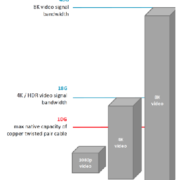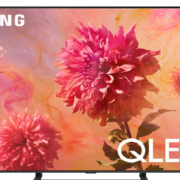Why Fiber Optic
How do you determine if a fiber optic infrastructure is appropriate for your next Home or Business?
- Does your internet service provider offer fiber to the home?
- Do you stream audio and video from the internet?
- Is internet streaming speed important to you?
- Is video resolution and image picture quality important to you?
- Do you anticipate upgrading to an 8K television or projector in your home?
- Is AV and internet system stability important to you?
- Do you live in an area prone to lightning strikes and storm activity?
If you answered yes to any of the above questions, fiber optic cabling may be appropriate for you. Fiber future-proofs the home / business and ensures it can leverage the latest internet and audio-visual technology. Plus, it provides the best system stability and increases the resale value.
8K displays are getting prepped for the holiday season, and 8K with all its pixel-popping glory requires up to 4x the bandwidth of traditional twisted pair cabling. That means Cat 5 and Cat 6 won’t deliver the signals your customers expect.
8K was designed for fiber optics. Fiber supports virtually unlimited bandwidth, it terminates in half the time of twisted pair, and it’s incredibly affordable. Plus, fiber is the only way to truly future-proof your home/business
Traditional twisted pair cables work great for 480i, 1080p and even 4K30 signals — all of which require less than 10G of bandwidth. That’s why twisted pair cable and twisted pair extenders (such as HDBaseT product) have worked great for years.
4K60 HDR and 8K are a different story. 4K60 HDR requires up to 18G of bandwidth and 8K requires up to 48G of bandwidth — both exceed the physical ability of Cat 5, Cat 6 and even Cat 6A.
But is 8K worth changing your installation practice? In short, yes. 8K or more appropriately HDMI 2.1 offers a host of features not available in previous signal generations, from dynamic HDR to eARC.





